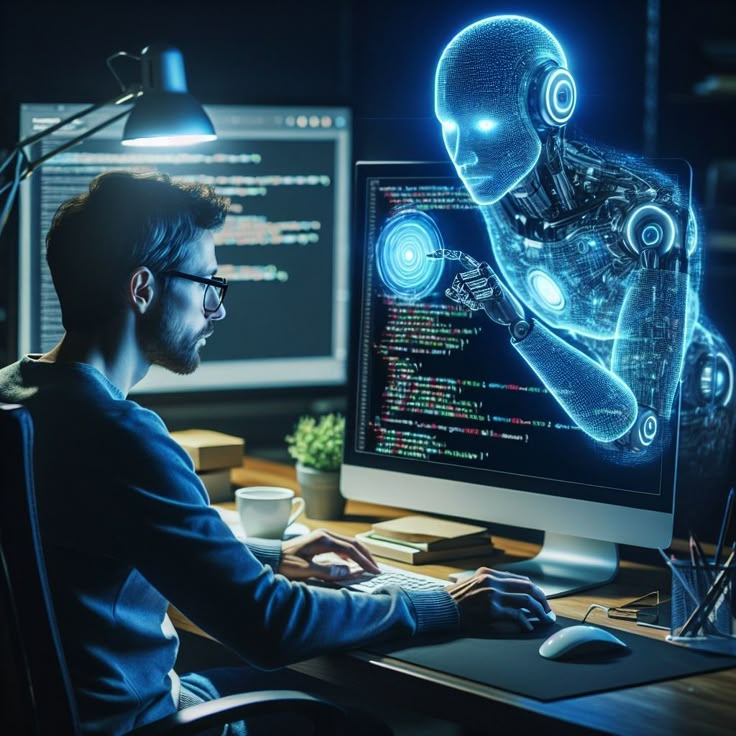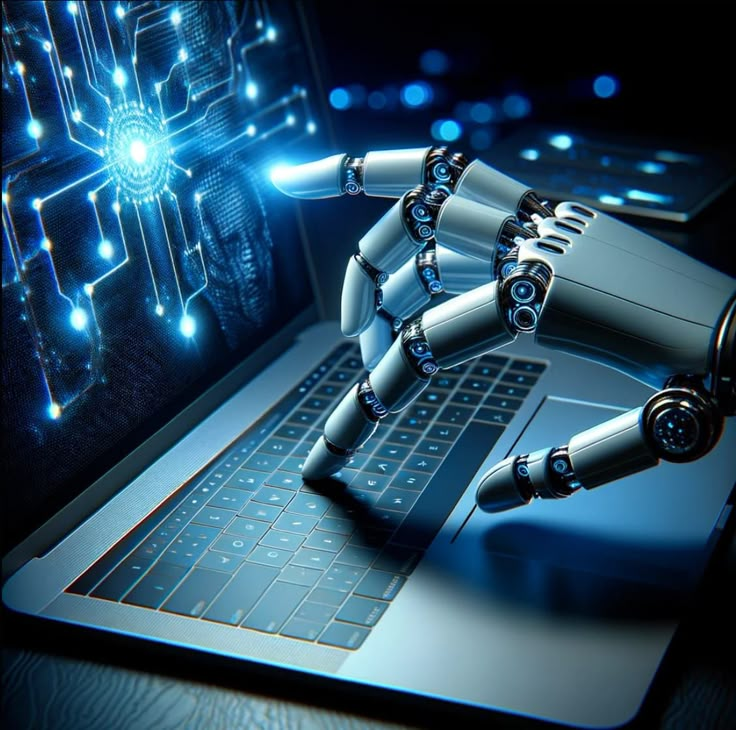Object detection is a critical task within the field of computer vision, enabling machines to identify and locate objects within images or video streams. From enhancing security through surveillance systems to enabling autonomous vehicles to navigate safely, object detection plays a pivotal role in various applications. This article explores how computer vision models detect objects, detailing the underlying processes, technologies, and future trends in this rapidly evolving field.
1. Introduction to Object Detection
Object detection refers to the ability of computer vision models to locate and classify objects within an image. Unlike simple image classification, which assigns a label to an entire image, object detection provides precise bounding boxes around detected objects along with their class labels. This capability is essential in applications such as surveillance, autonomous driving, and healthcare diagnostics, where accurate object identification is crucial for decision-making.
2. Understanding Image Data
To comprehend how object detection works, it’s essential to understand how images are represented in computer vision.
- Image Representation: Images are represented as a grid of pixels, each having a specific color value across multiple channels (e.g., RGB). This pixel data forms the foundation for feature extraction in object detection models.
- Preprocessing Techniques: Before analysis, images undergo preprocessing steps, including resizing (to a consistent dimension), normalization (scaling pixel values), and augmentation (introducing variations to increase robustness).
3. Types of Object Detection Models
Object detection has evolved significantly, with two primary categories of methods:
- Traditional Methods: Classical techniques, such as Haar cascades and HOG (Histogram of Oriented Gradients) combined with SVM (Support Vector Machine), were widely used in earlier object detection systems. These methods rely on handcrafted features and are less effective with complex data.
- Deep Learning Approaches: The introduction of deep learning has transformed object detection, enabling models to learn complex patterns directly from data. Convolutional Neural Networks (CNNs) have become the backbone of modern object detection frameworks.

4. Key Components of Object Detection Models
Several key components define how modern object detection models operate:
- Feature Extraction: Object detection models use convolutional layers to extract features from images. These features represent various visual characteristics, such as edges, textures, and shapes, which are critical for identifying objects.
- Region Proposal Networks (RPN): RPNs generate candidate object regions from feature maps, proposing potential locations of objects in the image. These regions serve as the input for further classification and refinement.
- Bounding Box Regression: After proposing regions, the model refines the bounding box coordinates for each object, improving the accuracy of object localization.
5. Popular Object Detection Algorithms
Several algorithms have emerged as leaders in object detection:
- YOLO (You Only Look Once): YOLO is renowned for its speed and accuracy, employing a single neural network that predicts bounding boxes and class probabilities simultaneously. This architecture enables real-time object detection.
- SSD (Single Shot MultiBox Detector): SSD operates similarly to YOLO but uses multiple feature maps at different scales to detect objects. This capability allows SSD to effectively handle objects of varying sizes.
- Faster R-CNN: Combining region proposals with classification, Faster R-CNN has become a benchmark in object detection. It leverages RPN for candidate region generation and applies a CNN for classification and bounding box regression.
6. Training Object Detection Models
Training object detection models involves several crucial steps:
- Data Annotation: Labeled datasets are essential for training. Annotation involves marking the location and class of each object within an image using bounding boxes or segmentation masks.
- Loss Functions: The training process employs specific loss functions to evaluate model performance. Common loss functions include classification loss (for correct class predictions) and localization loss (for accurate bounding box predictions).
- Training Process: The model undergoes training on the annotated dataset, adjusting weights through optimization algorithms. Validation sets help evaluate performance and fine-tune the model for optimal accuracy.
7. Evaluating Object Detection Models
Evaluating the performance of object detection models is crucial for understanding their effectiveness:
- Performance Metrics: Common metrics include mean Average Precision (mAP), precision, and recall. These metrics provide insights into the model’s accuracy and reliability in detecting objects.
- Challenges in Evaluation: Object detection evaluation faces challenges such as occlusion (when objects overlap), varying lighting conditions, and differences in object appearance. These factors can complicate the assessment of model performance.

8. Real-World Applications of Object Detection
Object detection has numerous applications across various industries:
- Autonomous Vehicles: Object detection systems are integral to enabling vehicles to recognize pedestrians, other vehicles, traffic signs, and obstacles, ensuring safe navigation.
- Surveillance Systems: Security cameras utilize object detection to monitor and identify suspicious activities, providing real-time alerts for potential threats.
- Healthcare: In medical imaging, object detection models assist in identifying tumors or abnormalities in scans, enhancing diagnostic accuracy and aiding healthcare professionals.
9. Future Trends in Object Detection
The field of object detection continues to evolve, with several emerging trends:
- Improvements in Algorithms: Ongoing research focuses on enhancing model efficiency, accuracy, and the ability to handle diverse scenarios, including low-light conditions and real-world complexities.
- Integration with Other Technologies: Combining object detection with natural language processing (NLP), robotics, and augmented reality (AR/VR) is set to enhance interactivity and user experience.
- Ethical Considerations: As object detection technology advances, addressing ethical implications, such as bias in datasets and privacy concerns, becomes increasingly important to ensure responsible deployment.
10. Conclusion
Computer vision models for object detection have come a long way, evolving from traditional techniques to advanced deep learning approaches. The ability to accurately identify and locate objects within images has transformative implications across industries, enhancing automation and decision-making. As technology continues to advance, the future of object detection promises even more exciting developments, paving the way for smarter systems and solutions in our everyday lives.
FAQs About How Computer Vision Models Detect Objects
1. What is object detection in computer vision?
Object detection is a computer vision task that involves identifying and locating objects within an image or video. Unlike simple classification, which labels an entire image, object detection provides bounding boxes around detected objects along with their class labels.
2. How do computer vision models extract features from images?
Computer vision models use convolutional neural networks (CNNs) to extract features from images. CNNs consist of multiple layers that process the image, identifying various visual elements like edges, textures, and patterns.

3. What are the key differences between traditional and deep learning methods for object detection?
Traditional methods rely on handcrafted features and classifiers (e.g., Haar cascades, HOG + SVM), while deep learning methods, such as CNNs, automatically learn relevant features from large datasets, allowing for more accurate and flexible object detection.
4. What are some popular object detection algorithms?
Some widely used object detection algorithms include:
- YOLO (You Only Look Once): Known for its speed and accuracy, YOLO processes images in a single pass to detect objects.
- SSD (Single Shot MultiBox Detector): Similar to YOLO but uses multiple scales to detect objects of varying sizes.
- Faster R-CNN: Combines region proposals with classification, offering high accuracy in detecting objects.
5. What is data annotation, and why is it important?
Data annotation involves labeling images with bounding boxes or segmentation masks to identify the location and class of objects. This step is crucial for training object detection models, as they learn to recognize patterns based on the annotated data.
6. How is the performance of object detection models evaluated?
Performance is evaluated using metrics like mean Average Precision (mAP), precision, and recall. These metrics help assess how well the model detects and classifies objects, considering factors like true positives, false positives, and false negatives.
7. What are the challenges in evaluating object detection models?
Challenges include occlusion (where objects overlap), variations in lighting, and differences in object appearances. These factors can complicate the evaluation of model performance and affect its robustness in real-world scenarios.
8. What are some real-world applications of object detection?
Real-world applications include:
- Autonomous vehicles: Detecting pedestrians, other vehicles, and traffic signs.
- Surveillance systems: Identifying suspicious activities in real-time.
- Healthcare: Assisting in medical imaging to identify tumors or abnormalities.
9. What are some future trends in object detection?
Future trends include improvements in algorithm efficiency and accuracy, integration with other technologies (like NLP and AR/VR), and addressing ethical considerations such as bias and privacy concerns.
10. How can I get started with object detection?
To get started, familiarize yourself with deep learning frameworks like TensorFlow or PyTorch, experiment with pre-trained models, and explore open datasets for hands-on practice in object detection tasks.
Tips for Understanding Object Detection Models
- Explore Educational Resources: Take advantage of online courses, tutorials, and documentation from platforms like Coursera, Udacity, or official framework websites to learn the fundamentals of object detection.
- Practice with Open Source Libraries: Use libraries like TensorFlow, PyTorch, or OpenCV to build your own object detection models. Experimenting with pre-trained models can help you understand how they work.
- Engage with the Community: Join forums and online communities (like Stack Overflow, Reddit, or GitHub) focused on computer vision to share knowledge, ask questions, and collaborate with others.
- Stay Updated with Research: Follow leading AI conferences (e.g., CVPR, NeurIPS) and journals to stay informed about the latest advancements in object detection and computer vision.
- Utilize Pre-Annotated Datasets: Start your projects with publicly available datasets (like COCO, Pascal VOC, or ImageNet) that are pre-annotated to save time and effort in data preparation.
- Analyze Existing Solutions: Study successful object detection applications and algorithms to understand their strengths and weaknesses. This analysis can inspire your own projects.
- Focus on Real-World Challenges: Consider the challenges of deploying object detection models in real-world applications, such as handling varying lighting conditions and occlusions, to better prepare for practical scenarios.
- Emphasize Ethics and Fairness: As you learn, pay attention to ethical considerations in AI and computer vision, such as bias in datasets and privacy concerns, to ensure responsible development.
- Experiment with Hyperparameter Tuning: Improve your model’s performance by experimenting with different hyperparameters (like learning rate, batch size, and network architecture) to find the best configuration for your specific task.
- Document Your Learning Journey: Keep a journal or blog about your experiences and discoveries in object detection. This reflection can help reinforce your understanding and assist others in their learning.